
If you haven’t read the first part of this series on pricing, go take a look. In this earlier post, I talked about finding that “sweet spot” that yields the greatest overall profit, without sacrificing too much on volume. I found, overall, that the number of people buying my books at $2.99, $3.99, and $4.99 stayed pretty much the same as prices went up. Obviously, as you probably guessed, I’ve now set the majority of my prices at $4.99 to capitalise on this. But, at that price, I’m only attracting one type of reader.
Let me explain. In my world, there are three types of reader:
- Those who have read my work before and liked it
- Those who have read my work before and didn’t like it
- Those who have never read my work before
In a little more detail:
Reader number 1. The fans – the readers without whom I wouldn’t be writing this article today (a massive thank you goes out to you all). These readers like my work enough to lay down $5 (or more) for the next book in the series. These guys are a major part of my long term pricing strategy.
Reader number 2 isn’t going to like my work, no matter what price I sell it at. Even if I give the book away, they’re still not going to like it. This reader is outside of my grasp, so I will let them go their merry way and focus on something else. Such as…
Reader number 3, the vast majority of the market, making up 99.99% of the 160 million+ readers (and that’s just the USA) who read at least one book per year (source: Huffington Post). My pricing strategy will determine how many of these readers are willing to take a chance on reading a book by an author they’ve not sampled before. More on this in a moment.
So how can pricing help grow these two important types of reader market? Here’s my approach:
.

.
Everyday pricing: this focuses on reader number 1, for whom $5 is not too much to ask for a book they know they’re going to enjoy. I’ve happily forked out much more than this for authors I already like, so this shouldn’t be too much of a shock to anyone. These guys are generally not too sensitive to price promotions – and are more than happy to spend a few dollars extra to get the book they want, when they want it, rather than waiting for a special deal.
Remember – the everyday price you set for your books is what these guys are going to pay. So, if you have a thousand fans, a dollar or two difference in unit price can make a big difference. Play with this figure to see what your readers value your work at – maybe it’s $7.99, maybe it’s only $2.99. This will vary wildly by genre and style, but don’t be afraid to experiment with higher prices (we need to make a living, after all) – the readers will decide what they’re prepared to pay, so make sure you’re listening…
Promotional Pricing – usually a price drop over one or more days, to try and boost sales. Primarily, this will attract reader number 3 – those who have never heard of you. In my experience, you will sell a higher volume of books at $0.99c during a promotion than you will at $2.99 or higher. Often, you will sell enough at the lower price to make up for the lost revenue of the 70% royalty rates at $2.99+. But not always.
This is nothing new. But, there is one thing I’ve discovered in the last couple of months that is new information:
Sliding Prices – Kindle Countdown started this trend last year, allowing authors to drop their prices and then have them climb back up again over a few days. The main problem is, if you run a countdown deal you have to be signed up for KDP select and you than can’t do a free promotion until the end of your enrolment period. You also can’t run a countdown deal if you’ve changed your price within 30 days.
These strict rules pretty much killed it for me, and for many other authors. However – the concept is a sound one: following a successful promotion, while you’re riding high in the paid charts, you’re still attracting reader number 3, even as you slide back down the ranks. If this is the case, you need to price accordingly. Here’s my experience:
- Promotion number 1: promotion ended and price went back to $4.99 – sold 100 copies in the following 24 hours ($350 royalties)
- Promotion number 2: promotion ended and price went back to $3.99 – sold 220 copies in the following 24 hours ($600 royalties)
- Promotion number 3: promotion ended and price went back to $2.99 – sold 350 copies in the following 24 hours ($730 royalties) (all the above were free promotions where the book hit the top #10)
Which just goes to show how much the majority of readers are willing to spend on an unknown author. The upshot of this is – whether you’re doing a free promotion or a 99c promotion, don’t jump back up to full price straight away (unless your usual price is $2.99, of course) or you’ll be missing out on the majority of those impulse purchases that allow new readers to give your book a go. And, hopefully, these first-time readers will become new fans and might even give your other (higher priced) books a go.
In a nutshell – I’ve found the following pricing trends hold true:
- Free works well AFTER the promotional period has ended and the title drops back onto the paid charts. Very little happens during the free promotion itself.
- $0.99c sells more copies during a paid promotion (eg Bookbub) than any other price except free
- $2.99 – $3.99 is more likely to attract readers who have never heard of me
- $4.99+ is an acceptable price for readers who have read my other books and like them
Meaning an average promotion will look like this:
- Run promotion at $0.99 or Free
- On the second day, during peak hours (5pm EST+), bump the price up to $2.99
- Once sales have levelled out, raise price to $4.99 (the everyday price)
- Lather, rinse, repeat.
This above approach has tripled the total profit for me following a big promotion. It also lends more weight to the common strategy of pricing book #1 of a series low, then upping the price as the series continues. This always felt like a sensible idea, but now there’s some actual data! I’m also going to experiment with price-pulsing on other books in my series, to encourage those who buy book #1 to pick up the next one after they’ve finished. This gets a little tricky, considering my series can be read in any order, but, dangnabbit, I’m going to try…
Until next time – leave a comment below if you’ve had any experience with chopping and changing prices, I’d love to rip your ideas off as my own and make millions….
If you want a step-by-step guide to getting started on your email list, go download “Reader Magnets”. This free ebook will show you how to put this process in place and start building your email list – click below to grab your copy:












